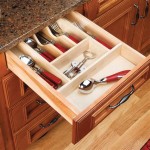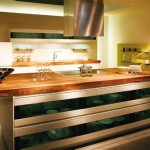Restaining Kitchen Cabinets Darker: A Comprehensive Guide
Updating kitchen cabinets is a cost-effective way to revitalize a kitchen's aesthetic. Restaining cabinets a darker color offers a dramatic transformation without the expense of full replacement. This guide provides essential information for homeowners considering embarking on this DIY project.
Assessing Cabinet Suitability
Not all cabinets are suitable candidates for restaining, especially when going darker. Several factors determine whether cabinets can successfully take on a darker stain:
*
Wood Type:
Solid wood cabinets are ideal for restaining. Particleboard or laminate cabinets with a thin veneer may not absorb stain evenly, resulting in a blotchy finish. *Existing Finish:
Determine if the cabinets have a previous stain, paint, or varnish. This information influences the preparation process required. Painted cabinets require complete paint removal before staining, while stained cabinets may only need light sanding. *Cabinet Condition:
Check for any damage, such as warping, cracks, or water damage. These issues should be addressed before restaining.Gathering Necessary Materials and Tools
Proper preparation is crucial for successful cabinet restaining. Assemble the following materials and tools:
*
Sandpaper:
Various grits (e.g., 100, 150, 220) for surface preparation and smoothing between coats. *Wood Stain:
Choose a high-quality stain in the desired darker shade. Test the stain on an inconspicuous area before applying it to the entire cabinet. *Pre-Stain Wood Conditioner:
This helps ensure even stain absorption, particularly important for softwoods. *Protective Finish:
Select a clear coat, either polyurethane, varnish, or lacquer, to protect the stained surface. *Paint Scraper/Stripper:
Necessary for removing existing paint or varnish. *Screwdrivers:
For removing cabinet hardware. *Drop Cloths/Plastic Sheeting:
To protect countertops and flooring. *Gloves and Safety Glasses:
Essential safety equipment. *Tack Cloth:
For removing dust and debris between coats. *Brushes or Foam Applicators:
For applying the stain and finish. *Wood Filler:
For filling any imperfections. *Painter's Tape:
To mask off areas that don't require staining.Preparing the Cabinets
Thorough cabinet preparation is essential for achieving a professional-looking finish.
*
Remove Hardware:
Take off all knobs, hinges, and pulls. Label and store hardware carefully for reinstallation. *Clean the Cabinets:
Thoroughly clean the cabinet surfaces with a degreasing cleaner to remove dirt, grease, and grime. *Remove Existing Finish (if necessary):
For painted cabinets, use a paint stripper or scraper to remove the existing paint layers. For previously stained cabinets, lightly sand the surface to create a smooth surface for the new stain to adhere to. *Fill Imperfections:
Use wood filler to address any dents, scratches, or holes. Allow the filler to dry completely and sand smooth. *Sanding:
Start with a coarser grit sandpaper (e.g., 100 grit) and progressively move to finer grits (e.g., 150, then 220) to achieve a smooth surface. *Clean Surfaces:
After sanding, thoroughly clean the cabinet surfaces with a tack cloth to remove all dust particles.Applying the Stain
Applying the stain requires patience and attention to detail.
*
Apply Pre-Stain Conditioner (if needed):
Follow manufacturer's instructions for application. *Apply Stain:
Using a brush or foam applicator, apply the stain in the direction of the wood grain. Work in small sections to ensure even coverage. *Wipe Excess Stain:
After a few minutes, wipe off any excess stain with a clean cloth, again working with the wood grain. The longer the stain sits, the darker the color will be. *Allow to Dry:
Follow the manufacturer's recommended drying time before applying additional coats or a protective finish.Applying the Protective Finish
The protective finish safeguards the stained surface and adds durability.
*
Apply Clear Coat:
Apply the chosen clear coat (polyurethane, varnish, or lacquer) in thin, even coats, following the manufacturer's instructions. *Sand Between Coats (if necessary):
Lightly sand between coats with fine-grit sandpaper (e.g., 220 grit) for a smooth finish. *Allow to Dry Completely:
Allow ample drying time between coats and before reinstalling hardware.Reinstalling Hardware and Clean-Up
Once the finish is completely dry, reinstall the cabinet hardware.
*
Reinstall Hardware:
Carefully reattach knobs, hinges, and pulls. *Clean-Up:
Dispose of used materials properly and clean any tools used during the project.Tips for Successful Restaining
Consider these tips for a successful cabinet restaining project.
*
Test the Stain:
Always test the stain on an inconspicuous area to ensure the desired color. *Work in a Well-Ventilated Area:
Stains and finishes can have strong fumes, so ensure proper ventilation. *Use Quality Products:
Investing in high-quality stains and finishes results in a more durable and attractive outcome. *Follow Manufacturer's Instructions:
Adhere to the manufacturer’s recommended application and drying times for both the stain and the protective finish. *Consider Professional Help:
If the project seems overwhelming, consider hiring a professional painter or refinisher.
Staining Your Wood Cabinets Darker Young House Love

Cabinet Refinishing An 8 Step Guide For Pro Painters Ppc

Staining Cabinets Upgrades Advice Needed

Refinishing Vs Kitchen Refacing American Wood Reface

Diy Staining Oak Cabinets Eclectic Spark

Kitchen Cabinet Refacing Vs Refinishing What S Right For You

How To Make Rustic Kitchen Cabinets By Refinishing Them The Best Stain Color Amanda Katherine

Painted Wood Cabinets Vs Stained A Questionnaire Kylie M Interiors

Should I Paint Or Refinish My Kitchen Cabinets

Painted Vs Stained Cabinets Which Fits Your Style Best
Related Posts








